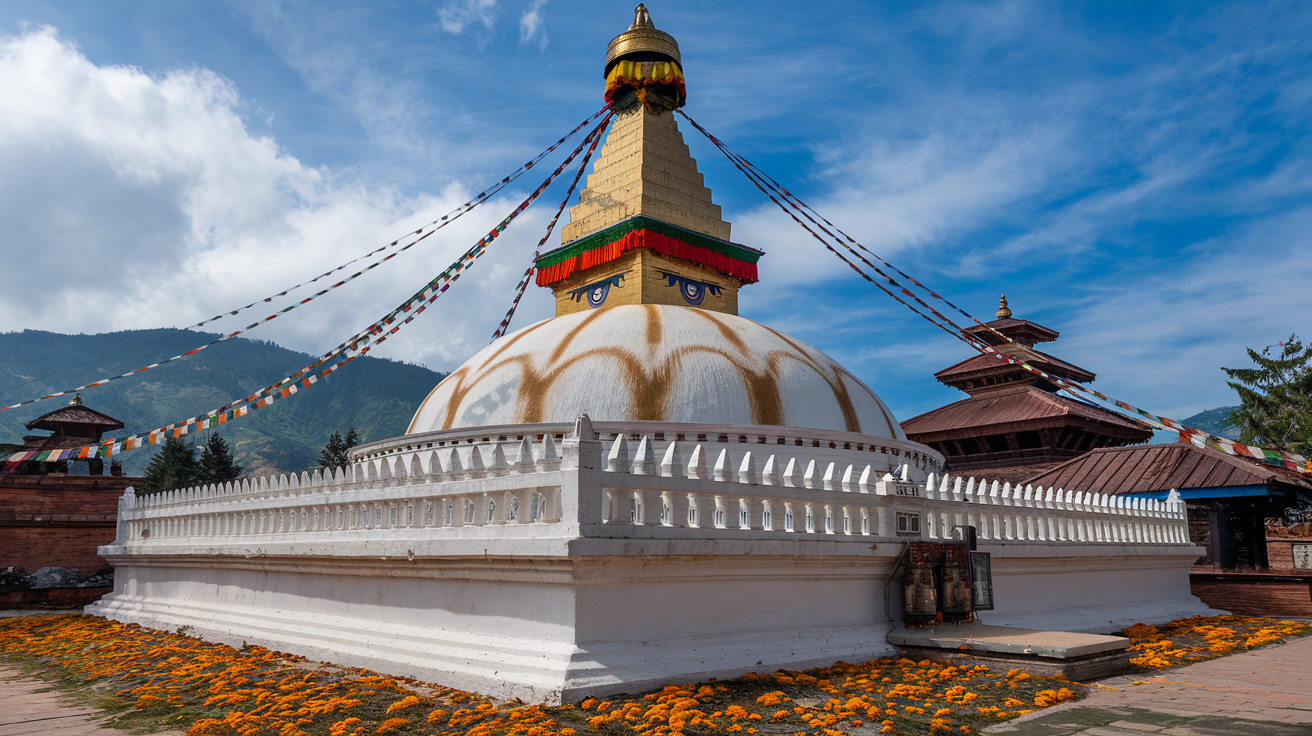Pagoda-Style Temples: A Glimpse into Spirituality
In Nepal, especially in the Kathmandu Valley, pagoda-style temples are renowned as highly emblematic and spiritually important architectural structures. These temples, characterised by their unique multi-tiered roofs and elaborate embellishments, provide an intriguing insight into the spiritual and cultural traditions of the area. Examine in detail the profound spiritual nature and exceptional architectural design of pagoda-style temples.
1. Architectural Design and Structure
The distinguishing characteristic of pagoda-style temples is their multi-tiered roofs, usually consisting of three to five levels. A cascading effect is produced by the steady reduction in size of each tier below the one below. This design is not only visually captivating but also holds great symbolic importance.
Situated at the highest point of the pagoda is a central spire or finial, frequently embellished with religious emblems or ornamental features. This spire symbolises the link between the physical world and the spiritual, extending towards the celestial sphere.
Typically, traditional pagodas have a blend of timber and stone structural components. The timber elements, including elaborately incised windows and eaves, are enhanced by stone foundations and walls, resulting in a seamless integration of materials.
Pagoda temples are widely recognised for their intricate carvings and extravagant ornamental elements. Each of these carvings serves a symbolic or narrative function and includes representations of gods, mythological settings, and floral patterns.
2. Spiritual and Symbolic Significance
Representation of Mount Meru: In Hindu and Buddhist cosmology, the pagoda is commonly seen as a depiction of Mount Meru, which is considered the central point of the universe. The multi-tiered building represents the revered mountain, thought to serve as the fundamental link between the mortal world and the divine.
Symbolism of the Roof Tiers: Each stratum of the pagoda symbolises distinct degrees of spiritual illumination. The progressive diminution in dimensions from the lowermost point to the highest point represents the rise from the physical realm to attain spiritual transcendence.
The overhanging eaves of the pagoda's roofs are believed to provide divine protection against detrimental elements and destructive forces. Their creation of a protected environment is highly favourable for the practice of meditation and prayer.
3. Historical and Cultural Context
Originating from ancient Indian architecture, the pagoda-style temple underwent adaptation and development in Nepal, notably during the Malla period (12th to 18th century). The design is a manifestation of the hybrid impact of Hindu and Buddhist architectural traditions.
The Malla dynasty made substantial contributions to the construction of pagoda-style temples in the Kathmandu Valley during their reign. Their rule witnessed the erection of numerous notable pagodas, frequently commissioned to celebrate religious occasions or to pay tribute to deities.
Pagoda-style temples function as central hubs for religious and cultural events, facilitating cultural integration. These structures are frequently located in significant urban areas or places of religious pilgrimage, effortlessly assimilating into the everyday routines and religious rituals of the nearby population.

4. Preservation and Restoration
Pagoda-style temples have traditionally shown remarkable resilience to natural calamities, much as earthquakes. Their structural stability is enhanced by the intricate tiered design and adaptable wooden joints. Yet, recent seismic events, such as the 2015 Nepal earthquake, resulted in substantial destruction, leading to a thorough effort to restore the affected areas.
The primary objective of restoration projects is to maintain the authentic architectural integrity and excellent workmanship of pagoda-style temples. This entails painstaking effort to restore and rebuild impaired components while preserving conventional methods and materials.
The preservation of cultural and spiritual history is an integral aspect of the restoration of pagoda temples, extending beyond just physical maintenance. Such endeavours guarantee the ongoing function of the temples as significant religious and cultural symbols.
5. Modern Relevance and Influence
The architectural design of the pagoda continues to serve as a source of inspiration for modern architecture, not just in Nepal but also around the world. Contemporary architects incorporate the aesthetic and symbolic aspects of the pagoda to design new buildings that pay tribute to old traditions while also attending to modern requirements.
Pagoda-style temples in Nepal hold appeal for both tourists and scholars who have a keen interest in the country's abundant architectural and spiritual legacy. Their contributions provide significant perspectives on the religious customs, artistic heritage, and historical development of the nation.
Community Engagement: The conservation and utilisation of pagoda-style temples cultivate a feeling of communal belonging and uninterrupted tradition. Local festivals, ceremonies, and rituals conducted at these temples serve to uphold cultural customs and enhance social cohesion within the community.
Conclusion
Pagoda-style temples transcend being mere architectural wonders; they epitomise spiritual importance, cultural legacy, and historical perpetuity. The tiered roofs and elaborate carvings provide insight into the religious and philosophical customs of Nepal, showcasing a seamless fusion of creativity and spirituality. Pagoda-style temples, acting as both historical landmarks and places of worship, persistently inspire and enthral, therefore safeguarding the magnificent heritage of Nepalese architecture for future generations.
Related Blogs
- Build Wise, Build Strong: Why Choose Pillar Construction in Nepal?
- Cost of Building a House in Nepal: Budgeting Guidelines
- The Essence of Nepali Architecture
- The Resilience of Bhaktapur’s Architecture
- Traditional Newari Houses: A Model of Sustainability
- The Unique Charm of Wooden Carvings in Nepali Architecture
- Pagoda-Style Temples: A Glimpse into Spirituality
- Symbolism and Spiritual Significance of pagoda
